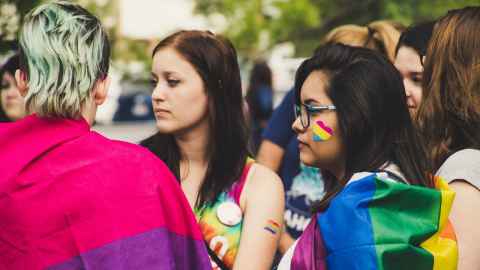Origins of female homosexuality
11 October 2018
Hormonal environments in the womb may help explain the evolutionary origins of female homosexuality and determine the spectrum of sexual orientation in women according to a review article published in the Archives of Sexual Behavior.

Arguments suggesting that same-sex sexual behaviours are ‘against the order of nature’ become completely implausible when framed in this evolutionary-developmental context, the study authors believe.
An international research team that includes Severi Luoto, doctoral candidate in evolutionary psychology from the University of Auckland, propose that the degree to which male-typical and female-typical traits vary between women is based on the degree and type of sex hormone exposure in prenatal development.
Severi Luoto and co-authors, Adjunct Professor Markus J. Rantala from University of Turku in Finland and Professor Indrikis Krams from the University of Tartu in Estonia and University of Latvia, examined 460 scientific studies from neuroscience, biology and psychology. Their review identified clusters of sex-typical traits which vary in degrees of masculinity. Non-heterosexual women tend toward higher masculinity on physiological traits such as facial structure, digit ratio, long bone growth and auditory biomarkers. For behavioural and psychological traits, they have a greater propensity to engage in risky behaviour, alcohol use, and sexual sensation seeking.
While these traits vary between heterosexual and non-heterosexual women, the current findings suggest the traits also vary between different types of non-heterosexual women.
Luoto says that women have increasingly more masculine traits across the spectrum of sexual orientation: from heterosexual, mostly heterosexual, bisexual, femme lesbian to butch lesbian women.
“Butch lesbians show a composite of masculine biological, psychological, and behavioural characteristics. Higher bodily masculinity is an indication of higher exposure to testosterone in prenatal development. Femme lesbians and bisexuals do not have similarly masculinised bodily traits, but they do show psychological and behavioural masculinisation. So, we infer that bodies of femmes and bisexuals have not been masculinised in prenatal development but parts of their brains have. Increased masculinisation of psychological and behavioural traits may have resulted from moderate exposure to testosterone, or high exposure to estrogen.
“We propose that the sex hormones testosterone and estrogen present at different times of foetal development might account for differences in masculinisation of the body and psychological traits between types of non-heterosexual women.
“Our neurodevelopmental theory can provide a framework for understanding non-heterosexual women’s body morphology, psychological dispositions, behavioural outcomes and lower general health. Distinguishing between different types of non-heterosexual women leads to an improved understanding of their different developmental trajectories and behavioural outcomes.
“Advances in the scientific understanding of diversity in human sexuality should help direct social policy, and provide impetus to abolish laws across nations which still restrict freedoms of expression and association, or punish same-sex sexual behaviour.”
Media enquiries
Megan Fowlie | Media Adviser
Communications Office
Mob: +64 021 926 408
Email: m.fowlie@auckland.ac.nz
Tess Redgrave | Media Adviser
Communications Office
Tel: 09 923 7383 Mob: 027 562 5868
Email: t.redgrave@auckland.ac.nz